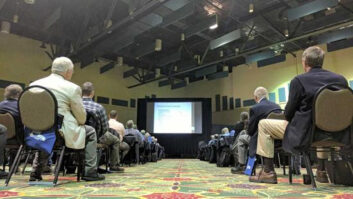Many of us here in the nation’s capital, where Radio World is based, relied on local radio and TV for vital information during this winter’s historic snowstorms.
We were not alone, apparently.
The strength of broadcast outlets in providing local coverage was the theme sounded by four Washington radio and television stations in a presentation to members of the Federal Communications Commission’s Communications Security, Reliability and Interoperability Council.
They highlighted efforts during the February 2010 blizzard.
WTOP(FM) morning anchor Mike Moss, WUSA(TV) Chief Meteorologist Topper Shutt, WRC(TV) news anchor Jim Handly, WTTG(TV) News Director Phil Metlin and NAB Executive Vice President of Television Marcellus Alexander detailed local broadcast efforts, which included a six-minute video highlighting the broadcast coverage.
“WTOP broadcast live emergency information 24-7,” said Mike Moss, saying the Bonneville station had dropped $140,000 worth of commercials and spent more than $50,000 in additional newsroom costs. Hundreds of thousands of people lost power; many people told the station it was a lifeline during the back-to-back storms, according to Moss.
WRC’s Handly told the council that NBC4 and other local stations were a pipeline to those calling the shots in public safety and first response.
“Viewership was enormous. It was a captive audience, hungry for the latest information and live pictures. For most, the local broadcast stations were their first and only source for immediate information from emergency declarations to safety tips.”










